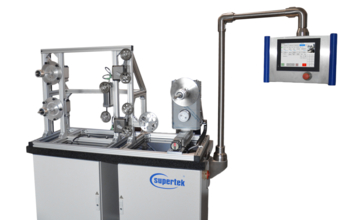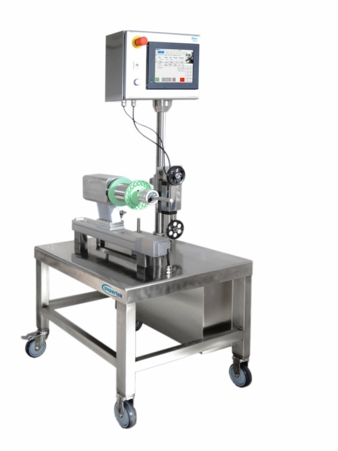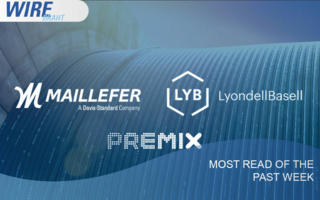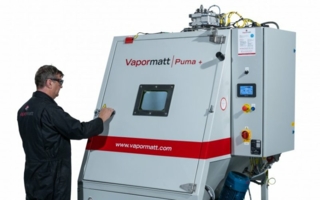04/04/2019
Tension control without compromise
The electromagnetic dancers, “EDR 10” and “EDL 60”, adjust tensile forces from the most precise to the medium tension control range. They operate using a patented force method and are recommended for all winding processes where precise tensile strength is important.
The “EDR 10” can be adjusted within a tension range of 2mN to 2,000mN and the “EDL 60” from 10cN to 600cN electronically in 1mN steps. All necessary functions such as tension force control, dancer control and speed control for the drive motor are included for automatic tensile force control and can be used immediately without programming knowledge. Operating equipment or the freely available user software, “Summit easy”, for PLC or PC applications completes the whole package.
In order to wind spider silk, delicate fibres or very thin wires – for example pure copper wire with a diameter of 8µm – the tensile strength must be kept very low and constant. For dynamic processes, such as accelerating, compensation for the motor controller deviation is necessary. Thanks to the patented electromagnetic system the dancer force always remains precise and constant regardless of the position of the dancer. Thus both criteria are met with the electromagnetic dancer.
Precise tensile strength control is also required for fibres, flat wires or round wires with higher tensile strengths because too high tensile strengths or tensile force fluctuations during winding significantly reduce the quality of the product. By using the electromagnetic dancer as an active tensile force controller in unwinding, winding and rewinding processes and increase in the quality of the processed materials can be achieved immediately.
An increase in quality by retrofitting the electromagnetic dancer was achieved, for example, in the manufacture and processing of fibre optic cables. The previous problem of twisting the fibres when winding was eliminated. The tensile strength can be maintained precisely when winding regardless of the speed so that the damping tests which can now also be done on the wound spool lead to optimum results.
Electromagnetic dancers were successfully retrofitted in production at a German supplier of photovoltaic modules. With a small investment a very great increase in quality was achieved when coating the flat wires that are used as cell connectors so that, compared with the competition, further processing is performed with no problems and with significantly higher quality. This example shows that when using the right technology even in difficult industries, such as the photovoltaic industry, very good company successes can be achieved even at the production site in Germany by automation and high quality.
Increase in quality by retrofitting
Another area of use is annealing wires where the tensile strength must be adjusted precisely. With these often difficult processes it is clear how easily the tensile force can be controlled with the electromagnetic dancer. Even during annealing the necessary tensile force can be adjusted digitally and documented intelligently and even regardless of the location by different systems, such as HMI, PLC, touch panel, PC or tablet.
As well as the electromagnetic tension controllers, Supertek also has electronic laying systems, such as the “ELU 300” that are superior to rolling ring drives. The synchronisation of the spool speed with the laying gradient is controlled extremely precisely in real time in the systems by a specially developed microcontroller unit MCU. The significant advantages over the rolling ring drive are thus digitisation and control or adjustment in real time of all parameters for a perfect winding pattern. Flange points, holding time, and laying gradient are only some of the parameters that can be edited, for example, with the Summi software regardless of location.
A fully automatic laying process with unknown spool geometries, materials and tolerances is achieved by a sensor-supported electronic laying process. With sensor-supported control of the laying process a precisely positioned winding pattern is easily possible. Even difficult products, such as solder tin, can be wound cleanly and in the correct position with these systems up to the last position. Layers with a traversing spool are particularly suitable for flat wires so that the product guide, for example when winding, is always in a straight line. For this Supertek offers the necessary linear units for mounting the whole spool drive with servomotors with higher working loads: the so-called multiwinders MW. All unwinding, winding and rewinding processes are digitised by Supertek’s components and software for highly precise automatic winding and they lay the foundation for the breakthrough to the smart factory in the industrial age 4.0.
Gerd Janssen, Supertek
Supertek GmbH
Nesserlander Strasse 120
26723 Emden/Germany
Contact person is Mr. Gerd Janssen
Tel.: +49 4921 93690-11





